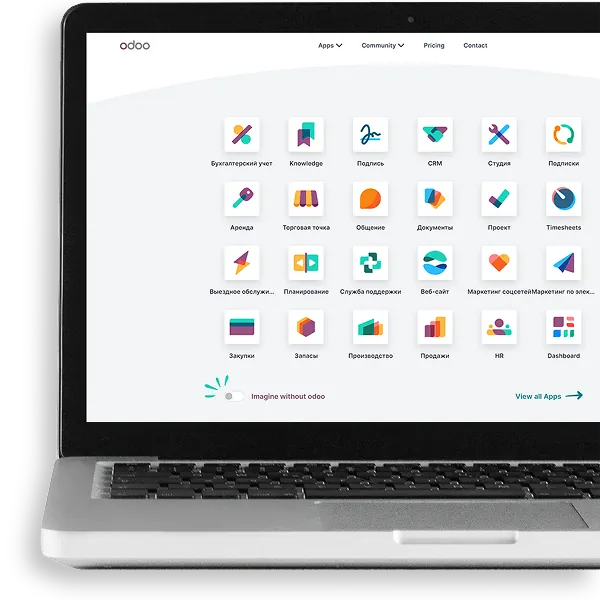CRM for a training and educational center
Educational institutions combine data-driven work, customer-centric service, and long-term relationships with students, teachers, parents, and investors. This is necessary to ensure competitiveness and a personalized learning experience. To simplify the management of your training center, you should use the Odoo CRM system.

CRM functionality for an educational center
The implementation of the software helps to transfer archives from paper to a single digital platform. The CRM system for the training center is also supplemented with the following functionalities:
- Electronic registration of participants. The program allows you to quickly register students, parents or teachers, and store their data in one place. You can easily organize the database - divide it into groups, add names, contacts, addresses, and information about training programs.
- Schedule management. Odoo CRM generates individual and group schedules, allows you to make changes in a few seconds, and notifies all participants immediately. If a teacher is sick or there is a free window, the system instantly shows who can substitute.
- Instant SMS notifications. Automatic notifications remind students about the start of classes, inform them about test results, payments, or important events. The training center doesn't spend hours on calls, and students are always in the loop.
- Reports and analytics. CRM for educational institutions is able to generate detailed reports on the popularity of courses, store all documents in one place, and analyze the effectiveness of training by various indicators.
Integration of such tools into the work of the training center helps to reduce the time spent on administrative tasks and improve the level of service for students and teachers. The Odoo CRM system can bring your educational project to a new level of organization and interaction today.


What tasks does Odoo CRM help to solve?
The program contributes to the effective management of educational institutions and projects. CRM for training centers helps to solve such tasks:
Automation of admission processes. The system stores test results and ratings, monitors the availability of documents, and reminds you if something is missing. Everything is at your fingertips - from the first application to the final decision.
Contact database management. Odoo CRM helps you keep track of parents, partners, or donors to better understand who to communicate with and how. Data is organized into convenient segments.
Processing of requests. The query service set up in the CRM for the educational center guarantees a quick response to questions and requests from students, parents, and teachers.
Audience segmentation. The CRM/ERP system for education allows you to filter contacts by specialty, level of education, age, or academic performance. This helps to personalize course offers and customize marketing messages.
Implementing ERP&CRM for a training center is an important step towards qualitative changes. When all processes become transparent and streamlined, the administration can devote more time to strategic tasks.
CRM benefits for different representatives of the education industry
The education industry is increasingly going digital. Universities, schools, private courses, and online platforms are competing for the efficiency of process management. In this case, a CRM system becomes an important component of the development of educational institutions of various formats.
For school
In a school environment, the program helps to set up automatic notifications about students' progress, attendance, and upcoming school events. Parents receive up-to-date updates on their children's academic achievements at a time convenient for them. CRM for the educational center simplifies the organization of parent-teacher conferences and school events by combining registration and messaging in one place.
For higher education institutions
In higher education institutions, the system automates the processing of applications: it tracks the status of applications and sends notifications about the progress of the admission campaign. The CRM system for an educational center also creates class schedules, manages groups, and optimizes the use of classrooms, laboratories, and campus resources.
For an online school
In distance education, the program can be used to organize virtual lessons, automatically generate and adjust schedules, and track students' presence and progress in real time. Thanks to integration with an online testing platform, the teacher quickly identifies gaps in knowledge and adapts learning materials to the needs of each student.
For the educational center
In training centers, CRM for educational courses centralizes the registration of students, records their results, and reminders of important dates. The system monitors the number of available seats in groups, which makes it possible to plan additional enrollments and adjust the workload to make the most efficient use of resources.







